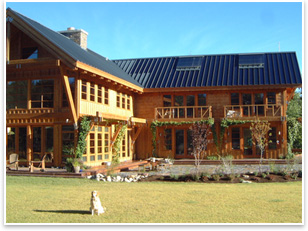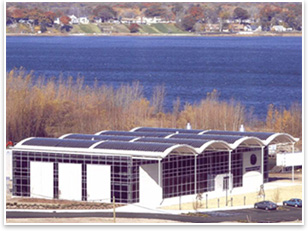
| Best Practices Some Things to Know on Applying PV An AIA Expo2007 preview Summary: Among the many educational opportunities at the AIA 2007 National Convention and Design Exposition will be free continuing education presentations on the Expo2007 show floor. As a sample, AIArchitect offers a discussion of a roof-system-integrated, self-adhering photovoltaic membrane manufacturer that provides design guidance for building-integrated solar-power systems. PV begins in design System components, he explains, include a direct-current (DC) disconnect for the solar panels; an inverter, to convert DC to alternating current (AC); and AC disconnects between the inverter and the connection to the building’s AC service panel. “One of the great things about PV systems is that after the system is turned on, the inverters will work automatically,” he says. “The solar panels don’t have any moving parts. They are either in the sun or not in the sun. Unlike other power-generating systems, you don’t need someone to watch the solar system. If something malfunctions, it just shuts down. “Roofers put on the specified underlayment, and electricians make the connections. The integrated system has to perform as a roof first, and as a solar generator second. So we encourage the roofer to get involved to leverage their installation labor for the installation of the solar modules.” They also look to integration of the PV modules into the roof as a cost-saving measure. “If you look at the cost of a PV system, on average the modules account for 55 percent; the inverter is maybe 7 percent; the balance of system components, such as wires, fasteners, and conduit, is 7 percent; indirect cost such as engineering, staging, and freight are 6 percent; and the labor is 25 percent. Indirect costs are fairly stable, so manufacturers work on the installed cost of PV systems through product innovation and connecting solar-panel installation with installation of the roof. Moreover, as the substrate or structure of the PV system, the roofing system might be included in the PV rebate calculation.”
One is a power purchasing agreement (PPA) where a financier owns the system and sells power to the building owner at a set rate as an operating expense. The contract may be fixed for the 20-year warranted life of the system, and, after 5 or 6 years, the financier may provide an option to turn the system over to the building owner. In the cost/benefit analysis, the attributes are not just the power, Parker notes. There may also be carbon dioxide and property depreciation tax credits to consider. Another element is how a state regulates selling power to the utility. Most states offer net-metering: the owner receives the retail value of the kW hours put onto the grid, as opposed to some avoided-cost value that the utility company sets. In all 50 states, though, Parker says, owners are allowed to connect a solar-energy system to the grid, usually with an interconnection agreement with the utility. Many solar-panel manufacturers are also well-suited to provide battery-based
PV-power systems as well as on-grid systems, Parker says, though
batteries require maintenance; add significant cost in installation,
housing, and security; and present a higher threat of electrocution.
Parker estimates that 80 percent of PV systems are on-grid and that
those systems are at least 20 percent cheaper than battery-backup
systems. “And
there is zero maintenance with properly operating on-grid systems.”
|
||
Copyright 2007 The American Institute of Architects. All rights reserved. Home Page |
||
home
news headlines
practice
business
design
recent related
› Solar Power Energizes Centerbrook Architects Office
› AIA COTE Selects Top Ten Green Buildings for 2006
› AIA Portland to Develop, Move into New Center for Architecture
AIA Expo2007—part of the AIA 2007 National Convention and Design Expo May 3–5 in San Antonio—will feature more than 800 companies in 200,000 square feet of display space. Floor hours are 9:30 a.m.–5 p.m. Thursday and Friday, May 3–4, and 9:30 a.m.–2 p.m. Saturday, May 5. Admission is free. For more information, visit the AIA Convention Web site.
AIA Expo2007 features four concentrated product pavilions covering product and service innovations in software and high tech, kitchen and bath, lighting, and stone and technology. McGraw-Hill Construction is also sponsoring the Green New Product and Technology Center, which will display more than 40 new environmentally sensitive products.
Expo Education will feature more than 80 programs, including 68 new sessions, each reviewed for quality and accuracy by AIA-member auditors. For a list of the exhibitors and details on program parameters, visit the AIA Convention site.
Photos courtesy of United Solar Ovonic.


 Paying for PV with a PPA
Paying for PV with a PPA